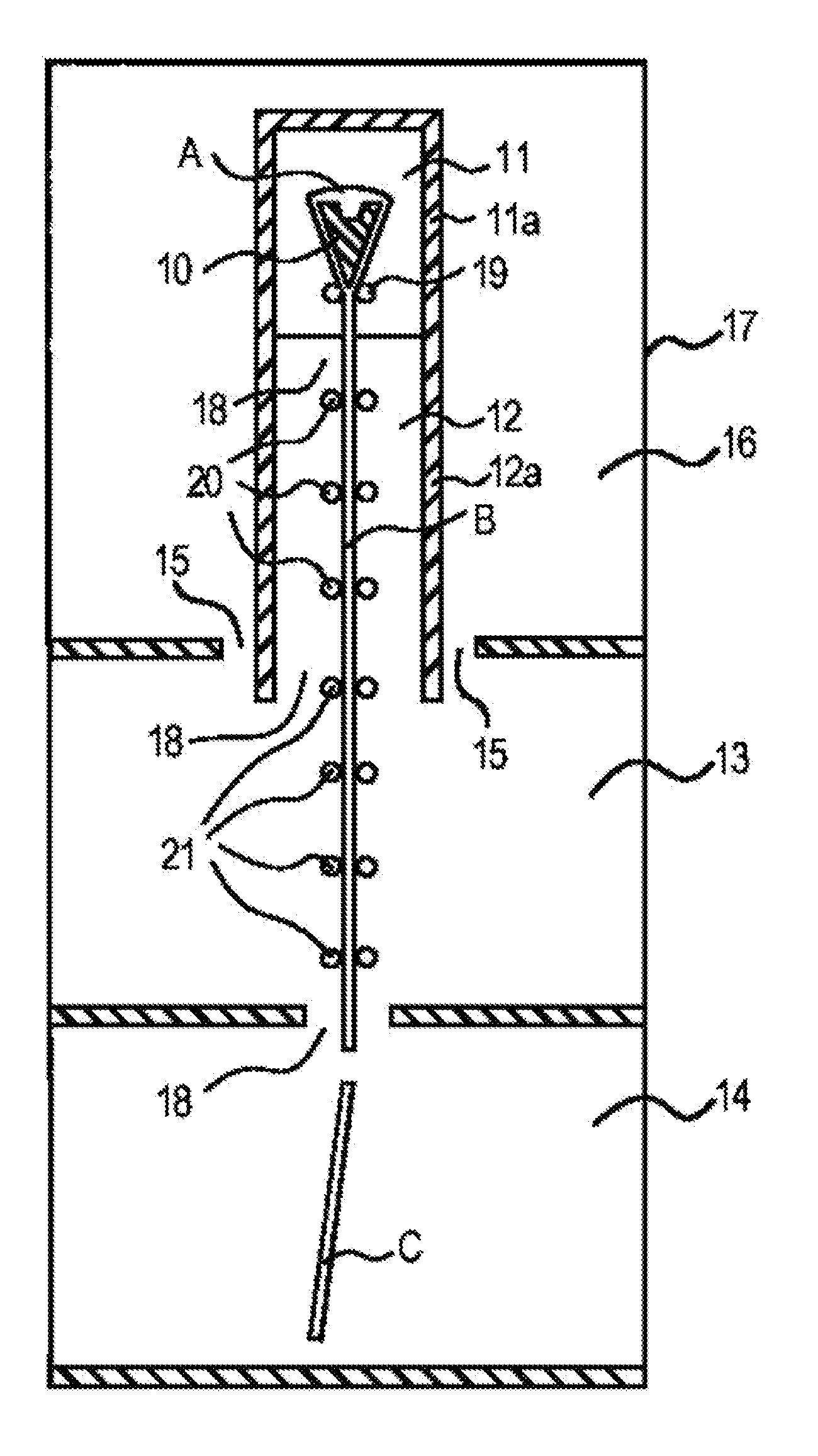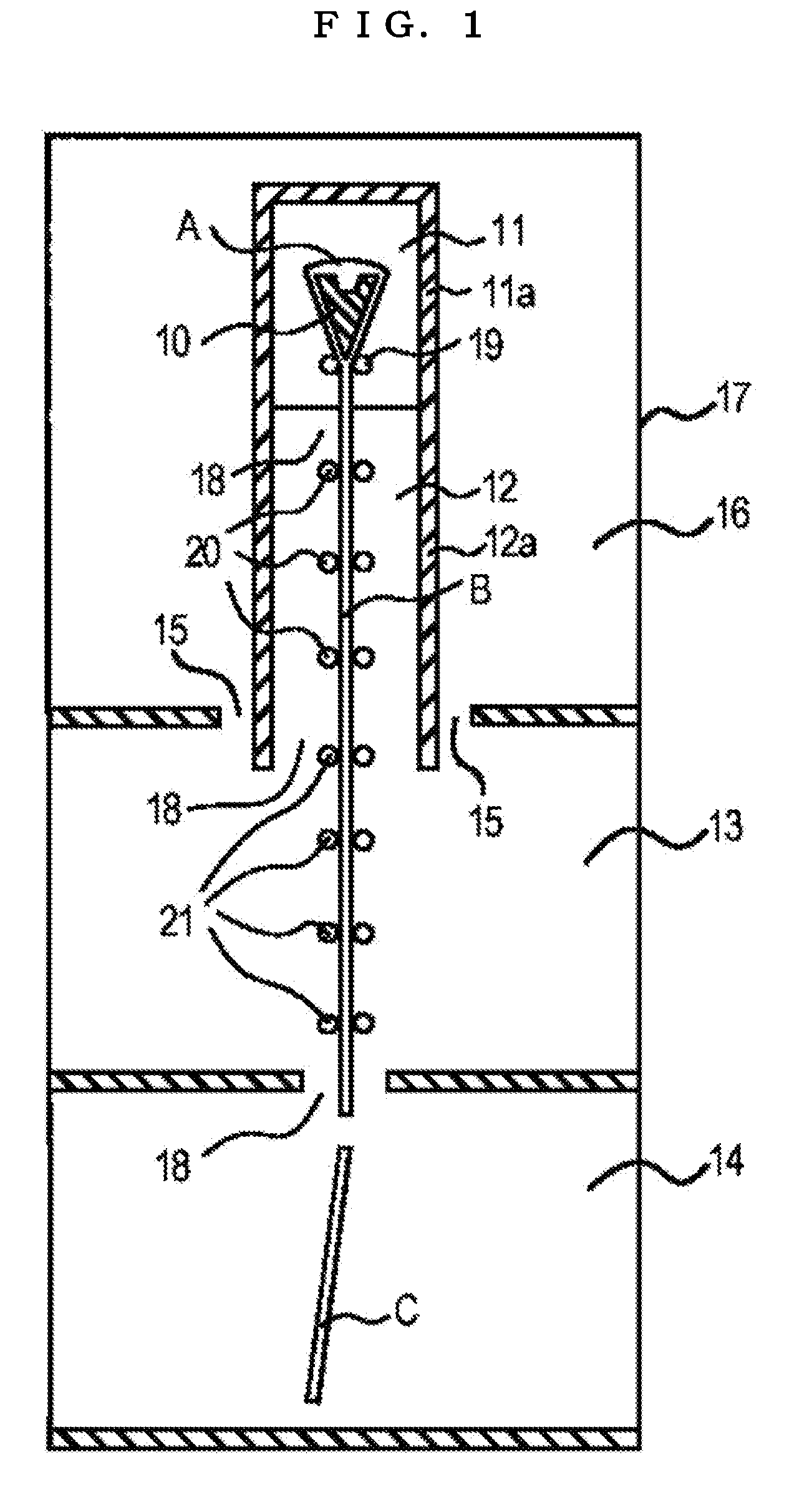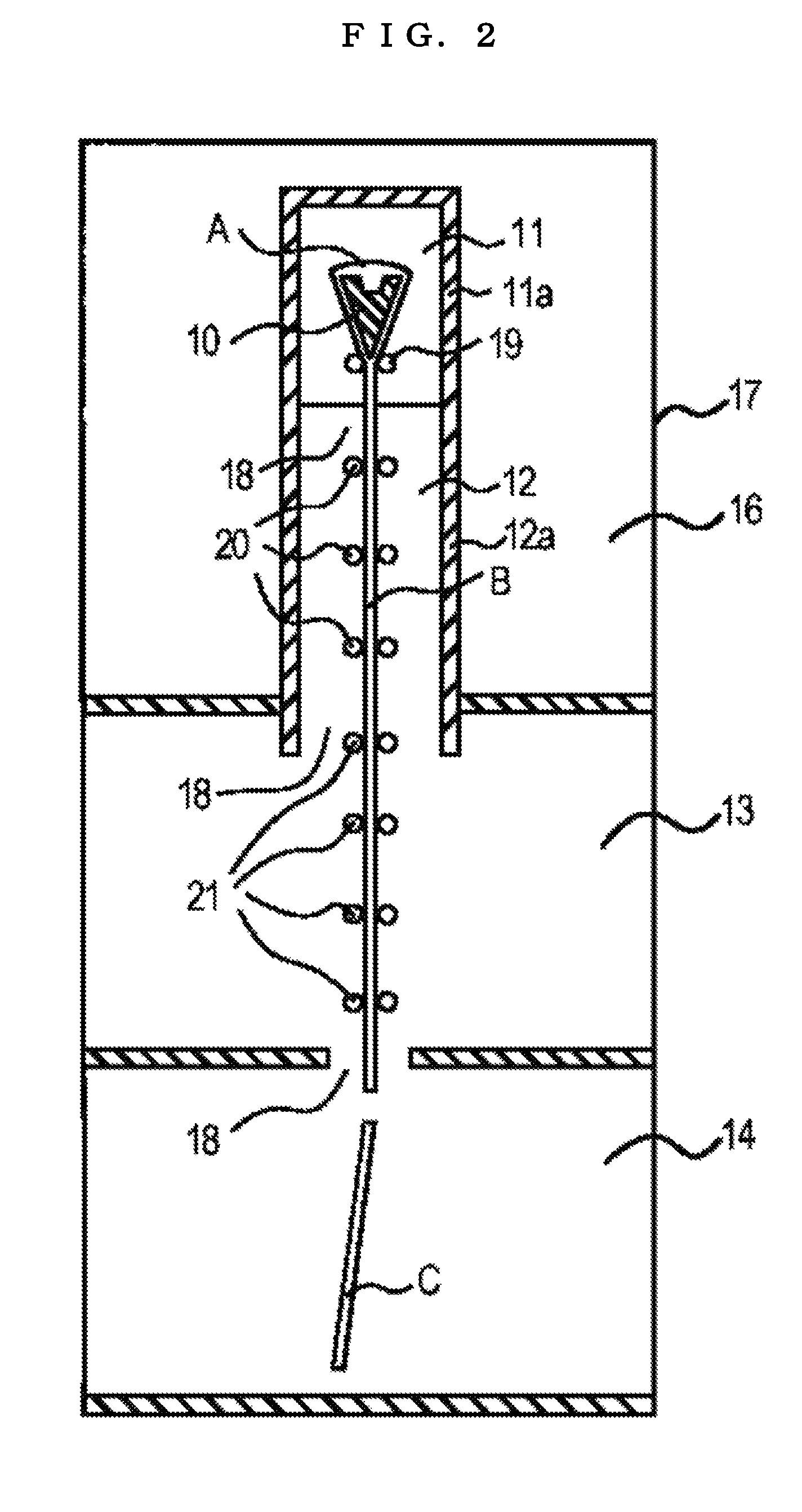Process and apparatus for producing glass sheet
a technology of glass sheets and processing equipment, applied in glass rolling equipment, glass tempering equipment, manufacturing tools, etc., can solve problems such as uniform image, and achieve the effects of suppressing the climb of low-temperature airflow, and sufficient internal strain reduction
- Summary
- Abstract
- Description
- Claims
- Application Information
AI Technical Summary
Benefits of technology
Problems solved by technology
Method used
Image
Examples
Embodiment Construction
[0063]Hereinafter, an embodiment of the present invention is described in detail in reference to a figure attached.
[0064]FIG. 1 is a schematic front view illustrating an apparatus for producing a glass sheet of the present invention. The production apparatus is for producing a glass sheet (glass substrate) for a liquid crystal display by an overflow down-draw method. In the order from the top, the production apparatus is provided with a forming furnace 11 for forming a glass ribbon B by overflowing a molten glass A supplied to a forming trough 10 having a wedge-shaped cross-section from the top portion of the forming trough 10 and allowing the molten glass A to fuse at the lower end portion of the forming trough 10, an annealing furnace 12 for removing the internal strain in the glass ribbon B while annealing the glass ribbon B, a cooling chamber 13 for sufficiently cooling the glass ribbon B annealed, and a cutting chamber 14 for cutting the glass ribbon B cooled in a given size. I...
PUM
| Property | Measurement | Unit |
|---|---|---|
| length | aaaaa | aaaaa |
| width | aaaaa | aaaaa |
| length | aaaaa | aaaaa |
Abstract
Description
Claims
Application Information
 Login to View More
Login to View More - R&D
- Intellectual Property
- Life Sciences
- Materials
- Tech Scout
- Unparalleled Data Quality
- Higher Quality Content
- 60% Fewer Hallucinations
Browse by: Latest US Patents, China's latest patents, Technical Efficacy Thesaurus, Application Domain, Technology Topic, Popular Technical Reports.
© 2025 PatSnap. All rights reserved.Legal|Privacy policy|Modern Slavery Act Transparency Statement|Sitemap|About US| Contact US: help@patsnap.com



